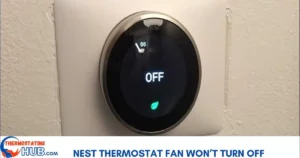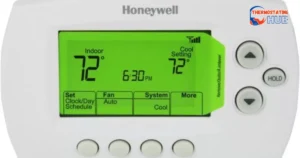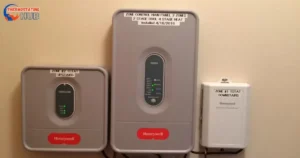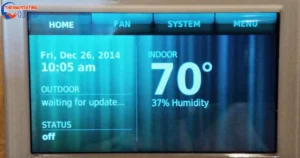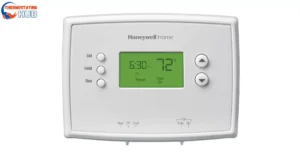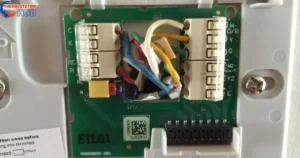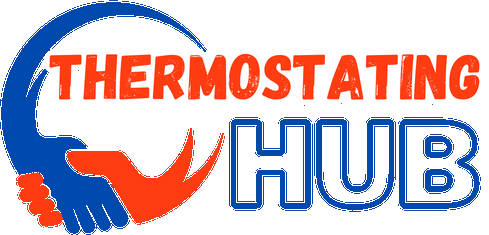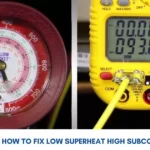Experiencing low suction pressure and high head pressure on your air conditioning system? This troubleshooting guide is just for you. Before diving into the specifics of what causes these issues, let’s break down the reasons behind low suction pressure and high head pressure separately.
Low suction pressure and high head pressure occur when there’s a drop in refrigerant pressure in the AC system, coupled with elevated output pressure in the compressor. The primary culprit behind this condition is a faulty or malfunctioning TXV valve.
The expansion valve plays a crucial role in regulating the liquid refrigerant’s flow into the evaporator coil, allowing it to expand into vapor form. This process leads to a significant drop in temperature.
Wondering why your AC is acting up? A malfunctioning TXV valve might be the cause. This valve regulates the flow of liquid refrigerant into the evaporator coil, causing it to expand into vapor form and resulting in a notable temperature drop.
| Issue | Potential Cause |
| Insufficient suction, low head pressure | Valve obstruction or blockage |
| Elevated head pressure, excessive suction pressure | Open or stuck valve |
| Standard head pressure, inadequate suction | Undersized valve |
| Standard head pressure, excessive suction | Oversized valve |
| Inadequate suction, elevated head pressure | Malfunctioning or faulty TXV valve |
What causes low suction pressure?
Low suction pressure in HVAC systems can result from various factors. One possible cause is insufficient heat reaching the evaporator, which can be addressed by replacing filters and cleaning system parts.
Another culprit could be a defective or undersized metering device, in which case replacing the power head is a viable solution.
Table 2: Causes and Possible Solutions for Low Suction Pressure in HVAC Systems
| Causes | Possible Fix |
| Insufficient heat to the evaporator | Replace filters, clean system parts |
| Defective or undersized metering device | Replace power head |
| Low refrigerant | Recharge with more refrigerant |
1) Insufficient heat going to the evaporator
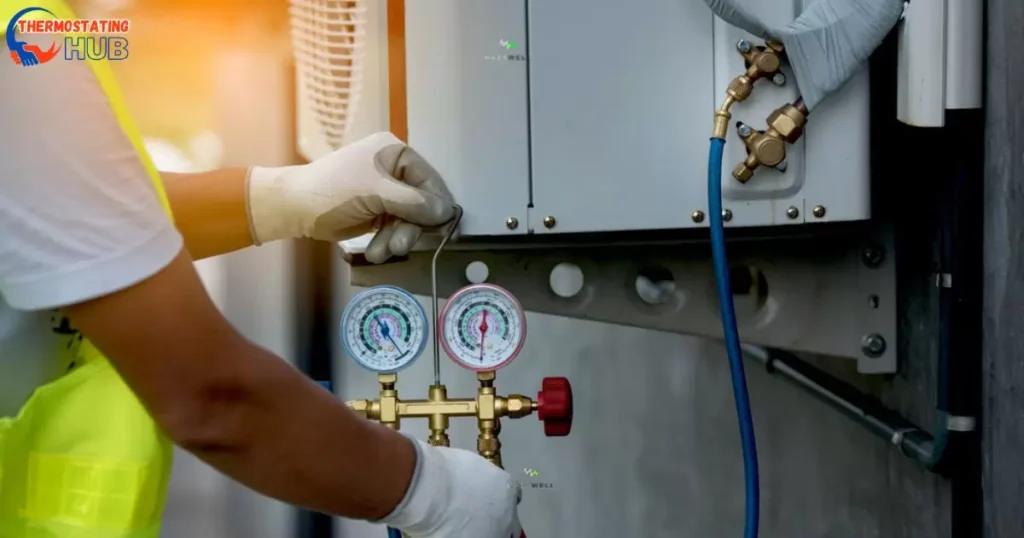
Low suction pressure in HVAC systems can stem from various factors, with one common cause being insufficient heat reaching the evaporator coil.
This issue is primarily triggered by low airflow, resulting from multiple factors such as restricted filters, blocked or undersized ducts, and other potential culprits.
What restricts heat to the evaporator?
| Cause | Possible Fix |
| Low refrigerant | Recharge the refrigerant with the correct amount |
| Plugged air filters | Clean filters on time |
| Plugged evaporator coil | Clean evaporator coil |
| Restriction in the refrigerant line | Check for blockages |
| Dirty or blocked condenser coil | Clear the coils with a hose, blow away leaves blocking it |
| Defective metering device | Replace power heads |
| Faulty fan motor | Clean blades, test capacitor, and replace if defective |
It may be tempting to assume low refrigerant levels when encountering low suction pressure. However, checking for superheating is the most effective way to troubleshoot this issue. This diagnostic measure helps determine whether the low suction pressure is caused by insufficient heat reaching the evaporator coil.
Checking superheat is a straightforward process that involves a few simple steps.
- Use a thermostat designed for pipe temperature measurement.
- Record the temperature and measure suction pressure at the suction lines.
- Convert the recorded suction pressure to temperature using the temperature/pressure chart.
- Calculate superheat by subtracting the two temperature values.
It’s crucial to note that in most systems:
- Superheat is typically around 10 degrees when measured at the evaporator.
- It ranges between 20-25 degrees when measured near the condenser.
Now, let’s illustrate the practical application of calculating superheat:
Suppose you measure a temperature of 45°F at the suction line and a suction pressure of 60 psi. Convert the 60 psi to temperature, resulting in 35°F. The temperature difference between the two values is 10°F. Since 10°F falls within the normal range, it indicates that low suction pressure is not due to low freon levels in the system but rather insufficient heat supply to the evaporator.
Pro Tip: Regularly checking to superheat provides a quick and effective way to assess the performance of an HVAC system, helping to identify and address issues related to suction pressure.
Read also: Goodman Furnace Solid Red Light On But Furnace Not Working
2) Undersized or defective metering device
Another potential cause of low suction pressure in your system might be a defective or undersized metering device.
Subcooling is a measure of the amount of refrigerant in the condenser unit. If, when determining the superheat at the suction line, you obtain a value higher than 10 (as we established that the normal superheat at the suction line is within 10°F), it indicates low refrigerant.
A high superheat suggests insufficient refrigerant in the system. However, this doesn’t automatically mean you should immediately add more refrigerant. A defective metering device could also be causing the low suction pressure. To confirm whether the issue lies with the metering device, subcooling needs to be assessed.
Important considerations:
High subcooling indicates an excess of refrigerant in the condenser. On a thermostatic expansion valve, subcooling typically ranges between 10°F to 18°F. So, how can you be sure that the problem doesn’t stem from low refrigerant but rather from the metering device?
Keep an eye on subcooling as refrigerant is added to the system. If the superheat remains unchanged but subcooling continues to increase, the issue likely lies with the metering device.
Pro Tip: Understanding the relationship between superheat, subcooling, and refrigerant levels is essential for accurate troubleshooting. Regularly monitoring these parameters can help pinpoint issues and ensure the proper functioning of your HVAC system.
3) Low refrigerant
In certain situations, low suction pressure is caused by low refrigerant. You can confirm this when the superheat is high and there is low subcooling.
The straightforward rule in such cases is to:
- Locate and rectify any refrigerant leaks.
- Monitor both superheating and subcooling as refrigerant is added to prevent overcharging.
What causes high head pressure?

Elevated head pressure in HVAC systems often stems from issues in the condensation process. The causes and their respective solutions are outlined in the table below.
Table: Causes and Possible Fixes for High Head Pressure in HVAC Systems
| Possible Causes | Main Fixes |
| Dirty condensing coil | Clean condensing coils |
| Defective condenser fan motor | Replace the motor capacitor or fan motor |
| Too high outdoor temperature | No specific action is needed |
| Overcharging system with refrigerant | Discharge refrigerant to standard level |
| Contaminated refrigerant | Discharge and recharge with clean refrigerant |
Reduced airflow in the condenser
High head pressure can result from reduced airflow into the condenser, often caused by a blocked or obstructed condenser unit.
In simpler terms, elevated head pressure occurs when the condenser unit fails to cool efficiently. This issue may arise due to problems such as a blocked condenser coil and excessively high outdoor temperatures.
Another contributing factor is inadequate space between the condenser and surrounding walls, known as AC wall clearance.
The Fix
Verify that there are no obstructions in the condenser and confirm that the fan is rotating smoothly without any issues. The fan plays a crucial role in expelling heat from the condenser coils.
2) An overcharge of the refrigerant
When refrigerant is overcharged in the system, more refrigerant enters the flow, causing both the suction and head pressure to increase.
3) Overfeeding metering device
A metering device that overfeeds refrigerant to the evaporator will lead to an increase in head pressure. This issue can also occur due to using an incorrect or missing piston.
How to calculate Normal suction and discharge pressure?
For the refrigerant R22 compressor, the normal suction pressure and discharge pressure can be determined based on the following conditions:
- Outdoor Temperature: 90°F
- Indoor Temperature: 79°F
With these temperatures, you can expect a condensing temperature of 120°F (ambient plus 30).
90°F + 30°F = 120°F
90°F + 30°F = 120°F
Converting this temperature to pressure for R22 at 120°F gives a discharge pressure of 260 psi.
Similarly, the evaporating temperature is calculated by subtracting the indoor temperature (70°F) from 40°F, resulting in an evaporating temperature of 39°F.
70°F − 40°F = 39°F
70°F − 40°F = 39°F
Converting this temperature to pressure for R22 at 39°F gives a suction pressure of 67 psi.
Therefore, under the specified conditions, the normal suction pressure is 67 psi, and the discharge pressure is 260 psi for the R22 compressor.
Navigating Pros and Cons of Low Suction Pressure, High Head Pressure
Understanding the advantages and drawbacks of low suction pressure and high head pressure in HVAC systems is crucial for effective management. Let’s explore the pros and cons.
Low Suction Pressure:
| Pros | Cons |
| Energy Efficiency: Lower power consumption | Reduced Cooling Capacity |
| Extended Component Life: Lesser stress on parts | Inconsistent Temperature Control |
| Cost Savings: Lower energy bills | Potential for Frost Formation on Coils |
| Early Issue Identification: Warning sign of problems | Increased Workload on Compressor |
High Head Pressure:
| Pros | Cons |
| Efficient Heat Rejection: Better cooling efficiency | Strain on Compressor and Components |
| Improved Performance in Cold Weather: Maintains warmth indoors | Higher Energy Consumption |
| Optimal Refrigerant Flow: Ensures effective heat transfer | Potential for Overheating Components |
| Early Detection of Issues: Indicates problems in the condensation process | Increased Risk of System Breakdown |
Pro Tip: Regular system monitoring and timely maintenance are essential to navigate the pros and cons effectively, ensuring the longevity and efficiency of your HVAC system.
Unveiling Key Takeaways of Low Suction Pressure, High Head Pressure Demystified
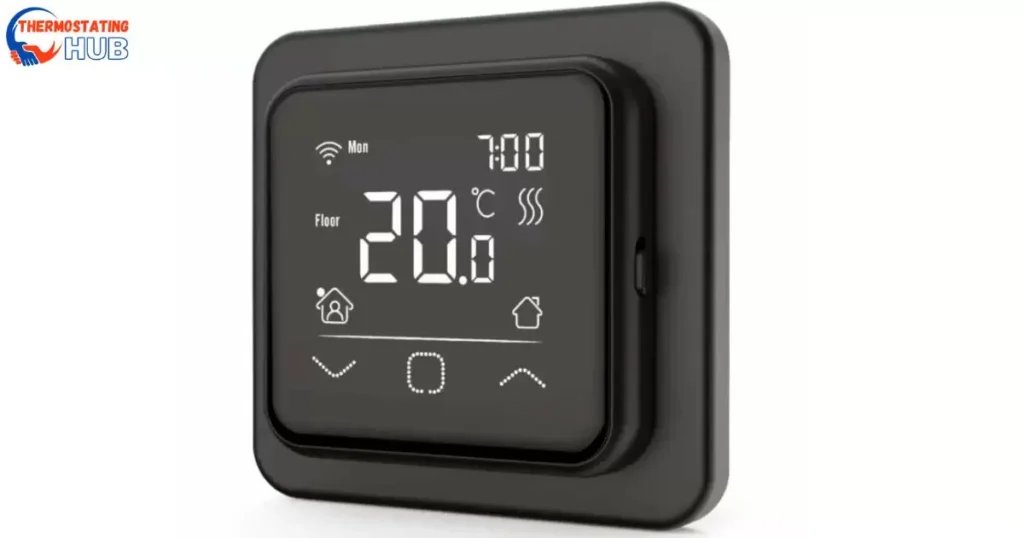
In the intricate world of HVAC systems, understanding the dynamics of low and high pressure is vital. Low suction pressure can compromise cooling capacity while offering energy savings. 🌐
On the other hand, high head pressure, though contributing to efficient heat rejection, may strain components. Key takeaways include the need for regular maintenance, addressing issues promptly, and leveraging system indicators like superheat and subcooling.
Striking a balance is the essence of a well-functioning HVAC system, ensuring optimal performance and longevity. 🔄
Read also: Furnace Ignitor Lights But No Flame
Answers To Key Questions
What does low suction pressure mean?
Low suction pressure suggests insufficient refrigerant or inadequate heat reaching the evaporator, impacting cooling efficiency.
What does high head pressure indicate?
High head pressure signifies efficient heat rejection but can also indicate potential strain on the compressor and components.
Can a bad compressor cause high head pressure?
Yes, a malfunctioning compressor can lead to high head pressure, stressing the system and affecting overall performance.
Can a bad compressor cause low suction pressure?
A faulty compressor can cause low suction pressure, impacting the refrigerant flow and compromising system efficiency.
Final Thoughts
Now that you are aware of the factors causing Low Suction Pressure and High Head Pressure, we trust that you’ve discovered potential solutions to address these issues.
Should you have any further inquiries or require assistance, please leave your questions in the comments. We’re here to help you achieve optimal performance from your HVAC system.
Thank you for taking the time to read this article! If you have any additional questions or need further assistance, please don’t hesitate to ask. I appreciate your engagement! 📚😊

I’m James Wilson, your HVAC maestro from “Thermostating Hub.” Elevate your comfort with my expertise in heating, ventilation, and air conditioning. Let’s transform your space into a haven of perfect temperatures, tackling HVAC issues with precision and enthusiasm.
![Low Suction Pressure High Head Pressure [Causes + Fixes]](https://thermostatinghub.com/wp-content/uploads/2023/12/low-suction-pressure-high-head-pressure.webp)





